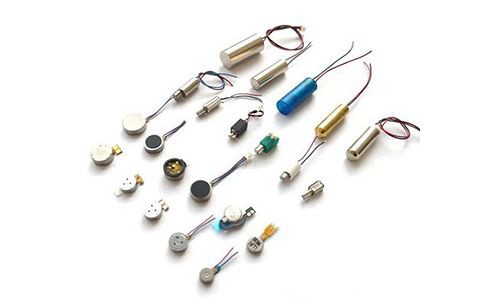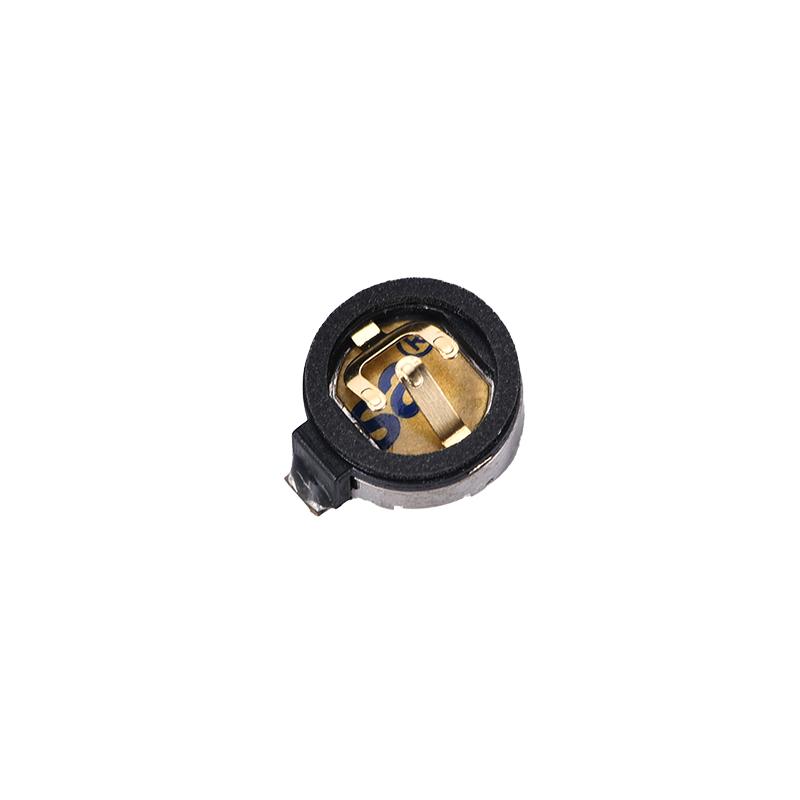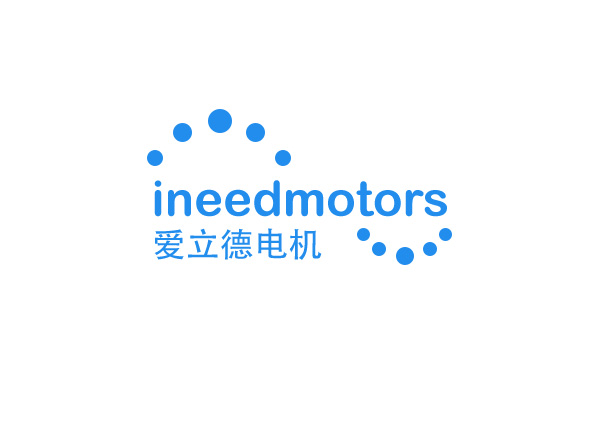How Vibration Motors Work for Haptic Feedback Devices

Vibration motors work by converting electrical energy into shaking movements. These movements create tactile sensations, making them essential for haptic devices. Haptic devices utilize these vibrations to replicate touch, enhancing user interaction with technology. For instance, in VR games, haptics enable players to engage for 40% longer. In VR shopping, haptics encourage individuals to explore items for 50% longer. Whether in gaming, education, or everyday tools, these motors significantly enrich your experiences, making them more immersive and enjoyable.
Key Takeaways
Vibration motors change electrical power into vibrations, making devices like phones and game controllers more interactive.
There are different motor types, like ERM and LRA, which work well for things like gaming and wearable devices.
INEED makes small, energy-saving vibration motors that can be customized for industries like healthcare and cars.
Vibration motors give haptic feedback, making interactions feel more real, especially in games and virtual reality.
People want smaller and smarter vibration motors because of new technology and the need for tiny devices.
How Vibration Motors Work
How vibration motors function
To understand vibration motors, start with their basic idea. These motors change electrical energy into shaking movements. This creates the touch-like feelings you notice in phones or game controllers. The process happens in four simple steps:
Electromagnetism: Inside, an electromagnet works with a moving part like a weight.
Electrical Current: Electricity flows through the coil, making a magnetic field.
Attraction and Repelling: The magnetic field pushes and pulls the moving part.
Vibration Creation: These movements make vibrations that reach the device's surface.
This process helps vibration motors give clear and steady feedback, improving how you use devices.
How electrical and mechanical parts work together
The mix of electrical and mechanical parts makes vibration motors work well. Different motor types use special ways to create vibrations. For example:
Motor Type | How It Works |
|---|---|
Eccentric Rotating Mass (ERM) | Turns electrical energy into movement by spinning a weight off-center. |
Linear Resonant Actuator (LRA) | Moves back and forth on one line using springs and specific frequencies. |
ERM motors are great for simple vibrations, while LRA motors give smoother feedback, perfect for wearables and phones.
Important parts of vibration motors
All vibration motors have key parts that make them work. These include:
Electromagnet: Makes the magnetic field needed for movement.
Movable Mass: A weight or part that moves to create vibrations.
Housing: Keeps the motor safe and strong.
Electrical Contacts: Lets electricity flow into the motor.
These parts are designed to make sure vibration motors work well and last long in many devices.
Types of Vibration Motors and Their Features
Linear Resonant Actuators (LRA)
Linear Resonant Actuators, or LRAs, are common in devices needing accurate vibrations. These motors move a weight back and forth on one line. Springs and magnetic fields help create these movements. Unlike other motors, LRAs give smoother and more steady vibrations. This makes them great for wearables and smartphones. They also use less power, saving your device's battery.
LRAs work best when exact vibration frequency is important. They usually operate between 170-180 Hz, giving reliable feedback. Compared to other motors, LRAs balance speed and strength well. This makes them a good choice for modern gadgets.
Metric | LRA | Piezo | ERM |
|---|---|---|---|
Speed | Second place | Winner | N/A |
Narrow range (170-180 Hz) | Wide range (0-500 Hz) | N/A | |
Amplitude | Similar to ERM | Similar to LRA | Similar to LRA |
Power Consumption | Low (typically 2V) | N/A | N/A |
Coreless Vibration Motors by INEED
Coreless vibration motors are a special design by INEED. These motors don’t have a traditional core, making them lighter. They are used in small devices like phones and game controllers. They last long, up to 1 million cycles.
One model, the IND-YZ0716L100-5543T, shows the benefits of coreless motors. It is only 7mm wide and spins at 11,000 RPM. This motor gives strong vibrations with a peak of 3.5G. It starts at just 0.8V, so it works with many devices. This makes it a flexible option for manufacturers.
Motor Model | Motor Size (mm) | Rated Voltage | Rated Speed (rpm) | Rated Current (mA) | Starting Voltage (V DC) | Operating Voltage (V DC) |
|---|---|---|---|---|---|---|
IND-YZ0716L100-5543T | 7.0 | 3.0 | 11,000 ± 3,000 | ≤200 | ≤0.8 | 1.2-3.6 |

Coin Vibration Motors by INEED
Coin vibration motors, also called pancake motors, are another INEED product. These small motors fit easily into tiny devices like wearables. Their closed design makes them durable. They also have sticky backs for easy installation.
These motors run at 3V DC and spin up to 10,000 RPM. They are great for low-power devices needing gentle vibrations. You can customize features like wire length and connectors. Their small size and good performance make them perfect for wearable tech.
Feature | Eccentric Rotating Mass (ERM) | Linear Resonant Actuator (LRA) | Coin Vibration Motor |
|---|---|---|---|
High | Moderate | Low | |
Frequency Range | Low to Medium | High | Medium |
Power Consumption | Moderate | Low | Very Low |
Size | Larger | Smaller | Small |
Applications | General use | Mobile devices | Wearable tech |
Advantages | Strong vibration | Precise control | Compact size |
SMD vibration motor

SMD vibration motors are small parts made for PCBs. They fit well in tiny devices like wearables and medical tools. Their lightweight design keeps gadgets slim and easy to carry.
These motors use low power, saving energy. They give steady vibrations for alerts, notifications, and touch feedback. They are strong and work well in tough conditions.
Here are some main features of SMD vibration motors:
INEED MPN | Size (mm) | (RPM) | Rated Vol. (V DC) | Rated (mA) | Acutal measured (mA) | Vibration Force | Starting Vol. |
IND-SMD-001 | H3.4*W4.4*L11 | 14000±2500 | 2.7 | 85 mA Max | 70 mA | 0.35 | 2.3 V DC Max |
IND-SMD-002 | H3.4*W4.4*L12.2 | 12000±2500 | 3.0 | 95 mA Max | 69 mA | 0.4 | 2.3 V DC Max |
IND-SMD-003 | H3.0*W4.0*L11 | 15000±2500 | 2.7 | 80 mA Max | 55 mA | 0.3 | 2.3 V DC Max |
Another model has slightly different features, showing their flexibility:
These details show how SMD motors work in many devices. They give accurate vibrations while using little power. This makes them a top pick for device makers. These motors improve how gadgets work and feel.
Coin brushless motor
Coin brushless motors are advanced and last longer than brushed ones. They don’t have brushes, so they need less fixing. Their flat shape fits thin devices like phones and fitness bands.
These motors are quiet and give smooth vibrations. They save energy, which is great for battery gadgets. No brushes mean less friction, so they stay cool and work better.
You can change settings like vibration strength and mounting style. This makes them useful for many things, like medical tools or game controllers.
Using coin brushless motors ensures steady and reliable feedback. Their smart design makes them a great choice for modern devices.
Applications of Vibration Motors in Haptic Feedback Devices
Consumer electronics: Smartphones and wearables
Vibration motors make smartphones and wearables more useful. These motors create small vibrations for alerts like calls or reminders. For example, your smartwatch vibrates when you get a call. This happens because of a tiny vibration motor inside. The need for these motors is growing fast. Smartphones use advanced haptics to improve how users interact. Fitness trackers and smartwatches also rely on small motors for accurate vibrations.
The market for phone vibration motors is expanding quickly. This is due to better smartphone features and popular wearables. Small, efficient motors keep devices light and working well.
Gaming and virtual reality devices
Haptic feedback makes gaming and VR more exciting by adding touch. Vibration motors create lifelike feelings, making digital actions seem real. For example, in VR games, vibrations mimic things like a car engine or a weapon's recoil. This makes games more fun and memorable.
A study showed people moved away from vibrations in VR. This proves haptics can guide movement and interaction in virtual spaces.
Haptics also helps people with disabilities enjoy gaming. It offers another way to interact with devices. Whether exploring VR worlds or gaming intensely, haptics keeps you engaged.
Automotive and medical applications
In cars, vibration motors improve safety with touch alerts. For instance, if your car drifts, the seat or wheel vibrates to warn you. This helps you react without looking away from the road. Haptics also makes infotainment controls easier to use.
In healthcare, haptics helps with precision and training. Surgical tools with vibrations give real-time feedback, helping doctors work more accurately. Rehab devices use vibrations to guide movements and motivate patients. These uses show how vibration motors improve healthcare results.
Industry | Use Case |
|---|---|
Automotive | Lane drift warnings, easy-to-use infotainment controls |
Medical | Surgery training, rehab devices |
The haptic devices market was worth $4.78 billion in 2023. It is expected to grow 16.4% yearly from 2024 to 2030. This shows more industries like gaming, cars, and healthcare are using haptics.
INEED's vibration motor solutions for different industries
INEED makes advanced vibration motors for many industries. These motors improve user experience by giving accurate and steady haptic feedback. Whether it's a wearable, medical tool, or gaming controller, INEED's motors work great.
Why Pick INEED's Vibration Motors?
INEED focuses on quality and new ideas. Their motors are small, save energy, and can be customized. This makes them easy to add to your products. For example, INEED's coin motors are perfect for wearables because they are tiny and use little power. Coreless motors respond quickly, making them ideal for gaming devices.
Real-Life Uses
INEED's motors work well in many fields. Here are some examples:
Case Study Title | Description |
|---|---|
Automated Vendor Bill Generation | Makes invoices faster using CSV files. |
Predicting Future Inventory Requirements | Improves orders with better inventory planning. |
Customizing Business Promotional Campaigns | Increases online sales with custom campaigns. |
Single-Click Printing of Multiple Item Fulfillments | Speeds up printing tasks for better efficiency. |
These examples show how INEED's motors make tasks easier and users happier. Their motors help businesses run smoothly while keeping high performance.
The INEED Benefit
Choosing INEED means getting motors built for strength and accuracy. They test their products carefully to ensure they work well in tough conditions. Whether for electronics, healthcare, or tools, INEED's motors improve your product's features and user experience.
🛠️ Tip: Check out INEED's custom options to design unique haptic feedback for your device.
Advantages of Vibration Motors
Small size and affordability
Vibration motors are tiny, fitting well in small devices. They work great in wearables and smartphones without making them bulky. These motors are also affordable, keeping costs low for manufacturers. This makes them useful for many products, like electronics and medical tools. Their small size improves features without raising production expenses.
Energy-saving and dependable
Vibration motors save energy and work reliably. Taking care of them helps avoid breakdowns and keeps them running well. Efficient motors use less power, cutting energy use and costs. For example:
Induction motors are 85%-95% efficient.
Synchronous motors go over 95%, great for steady-speed tasks.
Permanent magnet AC motors (PMACs) reach 90%-98% efficiency.
If bearings fail, efficiency can drop by 1.5%. But with regular care, motors stay reliable and give steady vibrations for devices.
Custom options with INEED motors
INEED offers custom vibration motors to fit different needs. Whether for wearables or gaming controllers, they provide flexible solutions. Their motors are easy to use and adapt. For instance:
Motor Type | Features | Uses |
|---|---|---|
Affordable, proven technology | Common in many industries | |
Modular | Easy to customize and install | Works in various applications |
Non-electromagnetic | Costlier, complex to make | Special uses with unique benefits |
These options let you design special haptic effects for your devices. INEED motors give accurate and steady vibrations, improving user experience in many fields.
Future Trends in Vibration Motor Technology
Smaller motors for tiny devices
The need for small, efficient motors is growing fast. Phones and wearables, like fitness bands, need compact motors. These motors give strong haptic feedback without making devices bulky. For example, linear resonant actuators (LRAs) are common in mobile gadgets. They improve touch feedback while staying slim.
Wearables have made this trend even bigger. Smartwatches need tiny motors for alerts and notifications. New micro-electromechanical systems (MEMS) help create these small motors. As 5G and IoT grow, demand for mini motors will rise. This will push more innovation in haptic technology.
Smarter vibrations and better feedback
Smart vibration control is changing how we feel feedback. Wearable haptics can now copy textures and physical sensations. For example, smart gloves can mimic surfaces, improving VR and AR experiences.
Artificial intelligence (AI) and machine learning (ML) are also important. AI studies your habits to make feedback personal. ML helps devices adjust vibrations in real-time. This makes interactions smoother and more immersive.
Development Type | Description |
|---|---|
Wearable Haptics | Devices show textures and detailed touch info. |
Smart Gloves | Copy textures and weights for VR and AR. |
AI and Machine Learning | Make haptic systems smarter and more realistic. |
Personalized Feedback | Adjusts to user preferences for better VR experiences. |
Adaptive Systems | Changes feedback instantly based on user actions. |
INEED's new motor technology
INEED leads in making advanced motors for many uses. Their motors are precise, efficient, and customizable. For example, INEED's coin motors are great for wearables. They are small and use little power. Coreless motors respond quickly, perfect for gaming devices.
INEED also offers custom solutions. Need stronger vibrations for gaming or softer ones for medical tools? INEED has motors to match your needs. Their focus on innovation keeps them ahead in the industry. They deliver reliable and high-quality haptic feedback.
🛠️ Tip: Check out INEED's custom options to design unique feedback for your gadgets.
Vibration motors change electrical energy into shaking movements. These movements create touch-like feelings, improving how you use devices. They are key to haptic feedback, making technology feel more real. From phones to wearables and games, they add a sense of touch.
INEED's vibration motors are leaders in haptic technology. Their small size, smart designs, and low power use make them perfect for today’s gadgets. Choosing INEED means getting dependable motors that boost user happiness and make your products stand out.
FAQ
What is a vibration motor, and how does it work?
A vibration motor is a tiny device that turns electrical energy into shaking. It uses a weight or a straight-moving part to create vibrations. These vibrations give touch-like feedback, making gadgets like phones and wearables more fun to use.
Why are vibration motors important in haptic feedback?
Vibration motors make devices feel more real by adding touch. They improve alerts, gaming, and virtual reality experiences. For example, your smartwatch vibrates for calls, or a game controller shakes during exciting moments, making it more engaging.
Can vibration motors be customized for specific devices?
Yes, vibration motors can be adjusted to fit your device. You can change their size, strength, mounting style, and power needs. INEED offers custom motors for wearables, medical tools, and gaming gadgets to ensure they work perfectly.
How do vibration motors save energy?
Vibration motors are designed to use less power. For example, Linear Resonant Actuators (LRAs) work at low voltages and save energy. This makes them great for battery-powered devices like smartwatches and fitness trackers.
What industries benefit from vibration motors?
Many industries use vibration motors, like electronics, healthcare, and cars. Phones use them for alerts, medical tools for precise feedback, and cars for safety warnings like lane drifting alerts.
💡 Tip: Check out INEED's custom motors to improve your device's haptic feedback.
See Also
LRA Vibration Motors: Key Drivers Behind Haptic Feedback Innovations
Uncovering The Mechanism Of 3V DC Motors Generating Vibrations
Investigating The Uses Of Vibration Motors Across Various Industries
A Comprehensive Overview Of Vibration Motors: Types And Uses
Haptic Feedback Systems: Uses, Advantages, And Upcoming Developments
Get Custom Micro DC Motors from
INEED Motors!
Leading Brand in Vibration Motor Manufacturing Industry
